Japanese vs Korean vs Chinese | Which Is Really The Hardest?
Japanese vs Korean vs Chinese 😲 Can You Really Learn Them All?
Thinking about learning an East Asian language and don’t know which one to go for? Japanese vs Korean vs Chinese – it’s a tough choice right?!
Want to make sure you pick the easiest one that’s right for you? Or alternatively (like me!) you want to pick the HARDEST one?
Whether you’re sensible or stupid (like me…) this article will help you make the right decision.
So stick with me!
Japanese vs Korean vs Chinese – What Do The Studies Say?
Japanese vs Korean vs Chinese – It’s Not So Bad
Japanese vs Korean vs Chinese – History
Japanese vs Korean vs Chinese – Elements Of The Language
Japanese vs Korean vs Chinese – Key Differences
Japanese vs Korean vs Chinese – Can I Learn All Three?
Japanese vs Korean vs Chinese – Which Order Should I Learn Them
Japanese vs Korean vs Chinese – Which Is REALLY The Hardest?
Japanese vs Korean vs Chinese – FAQ’s

Japanese vs Korean vs Chinese // What The Studies Say
According to studies, Japanese is reportedly the most difficult language for native English speakers to learn.
It is important to note that this study is based on ENGLISH native speakers – since your native language definitely influences how you learn other languages.
In the study, languages are divided into three different difficulty ratings.
Korean and Japanese are at the top of the “most difficult” level – with Japanese having just a small edge on Korean for it’s use of 2 alphabetic structures PLUS the use of Kanji – Chinese characters (in total 3 alphabets essentially) instead of just one alphabet like in Korean.
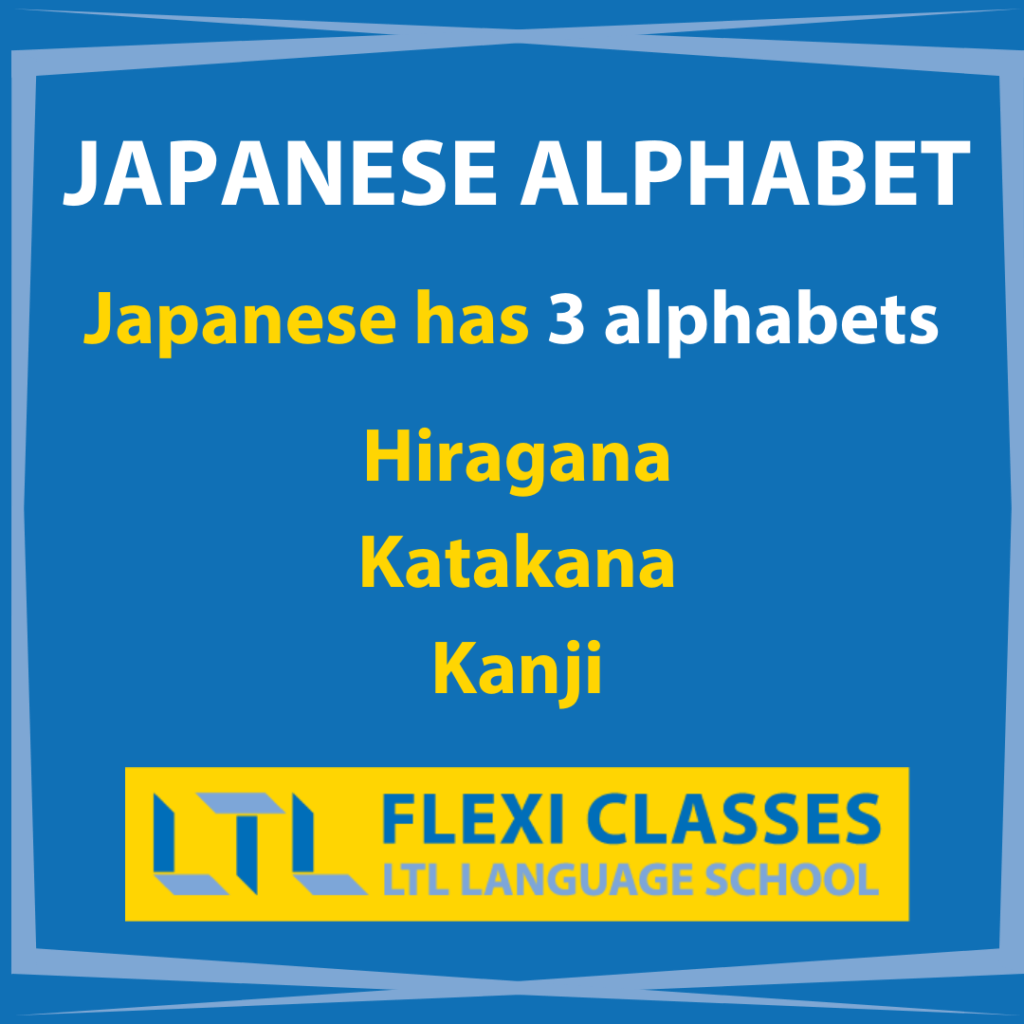
Grammatically, however, they’re pretty on much on a par.
Actually, I find having the Kanji and 2 different alphabets kind of makes it easier.
But I’ll get back to this later.
Before we get into comparing the different languages on difficulty, let’s look at Japanese vs Korean vs Chinese.
We will dive into a brief history of these East Asian languages, that, at a glance look so incredibly far removed from each other, but in reality have many similarities hidden behind the different scripts.
Japanese vs Korean vs Chinese // It’s Not So Bad
Languages from all over the world can be placed onto the ‘language family tree’. Languages change, develop, expand, and die out constantly.
The beautiful thing about languages is that they are not, and never will be static.
No language, including English, remains the same even for a few months or a year. On the other hand, of course, language change is not dramatic and rapid.
Languages evolve over time just like animals. It takes an extremely long period for changes to fully establish themselves.
So long that we often don’t even notice these changes happen. Plus, there is a great variety in language change.
Sometimes this could simply mean the appearance of a new word or phrase, which often gets coined when something new comes about into the world – a new concept, or a new item or product.
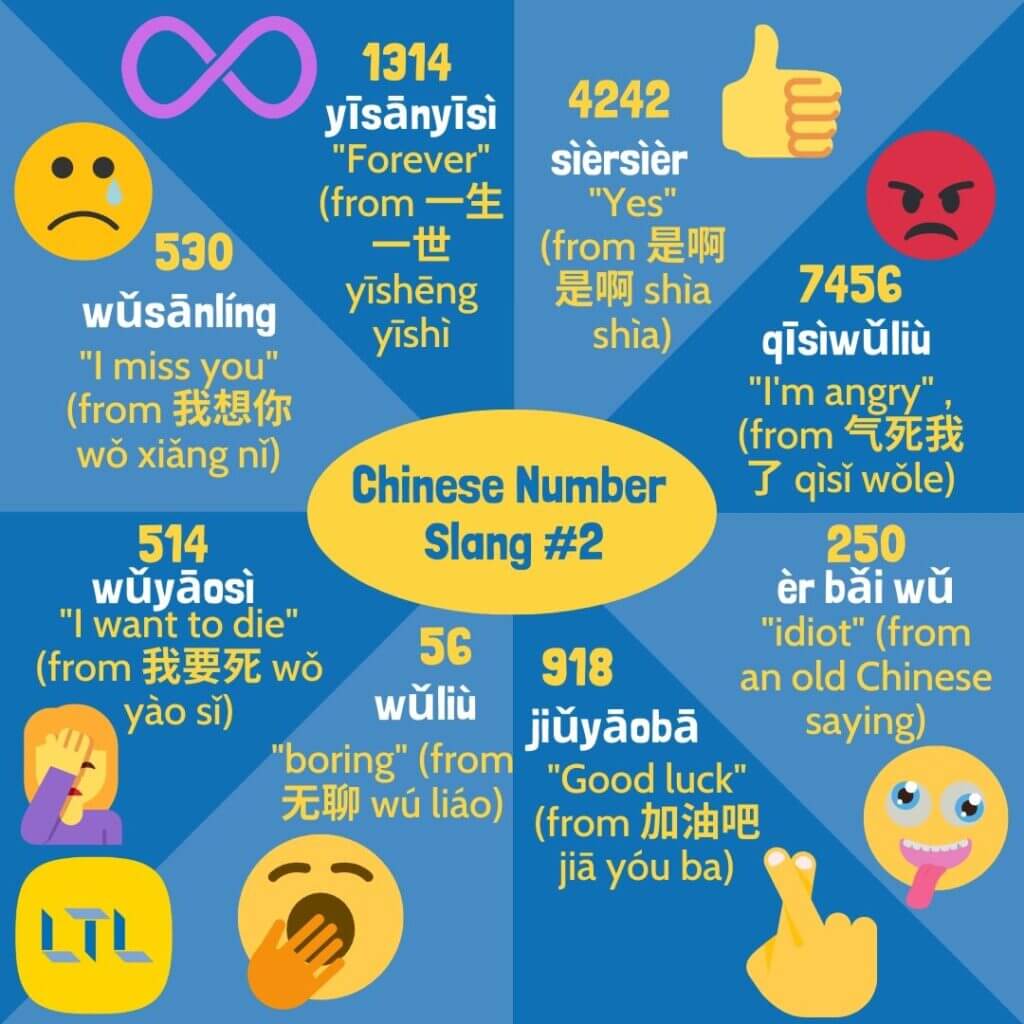
For example, had you started chatting about blogs 30 years ago no one would’ve had a clue what you were talking about.
It wasn’t long ago that the concept or term “blog” didn’t even exist, let alone vlogs. (My computer still doesn’t recognise this word… just like my Grandma.)
Language change can also appear in grammar.
Years ago, people used to think it wasn’t good English to split infinitives (split the verb) since Latin didn’t.
Funny thing about this is that Latin CANNOT physically “split” infinitives since the infinitive is just one word, like in French or other romance languages, i.e. “parler” – to speak, French.
So why am I mentioning all of this? I’ve got a point trust me…!

Chinese, Japanese, and Korean are all, at a glance, completely different languages. Their scripts are entirely different from each other and of course any other language using the Roman alphabet..
Well… What if I told you that Korean, Chinese and Japanese are all actually similar languages?
Similar in that French, Spanish, and Italian are all pretty similar.
Admittedly, these languages all come from the same language family – which is not true of Chinese, Japanese and Korean.
However!
Chinese, Korean and Japanese all share some similar vocabulary items, similar grammar, and similar sounds.
Japanese Kanji are also taken from Chinese so you’ll find if you know some Chinese, you already have a head start in Japanese…

And we haven’t even mentioned those useful loanwords yet either!
DID YOU KNOW – If you speak English you already know a load of words in Korean, such as:
- Chocolate – 초콜릿 (choko-lit)
- Dessert – 디저트 (dijeoteu)
- Hot Dog – 핫도그 (hat-dogeu)
Language can appear scary, but it’s not always as bad as it may seem!
Japanese vs Korean vs Chinese // History
Chinese Language History
The Chinese language can be broken down into Old Chinese (11th to 7th centuries B.C.), Middle Chinese (7th through 10th centuries A.D.), and Contemporary Chinese (Mandarin).
Despite more than 3,000 years of history, it hasn’t developed and changed that much.
Chinese is the oldest written language in the world, and Chinese characters have always been a big part of the Chinese language.
There are over 40,000 Chinese characters in total, and in order to read a newspaper you should be able to recognise between 2,000- 3,000 Chinese characters.
Simplified characters are used in mainland China, whilst traditional characters, with more pen strokes and complicated structures are used in Taiwan, Hong Kong, and also in Japanese.
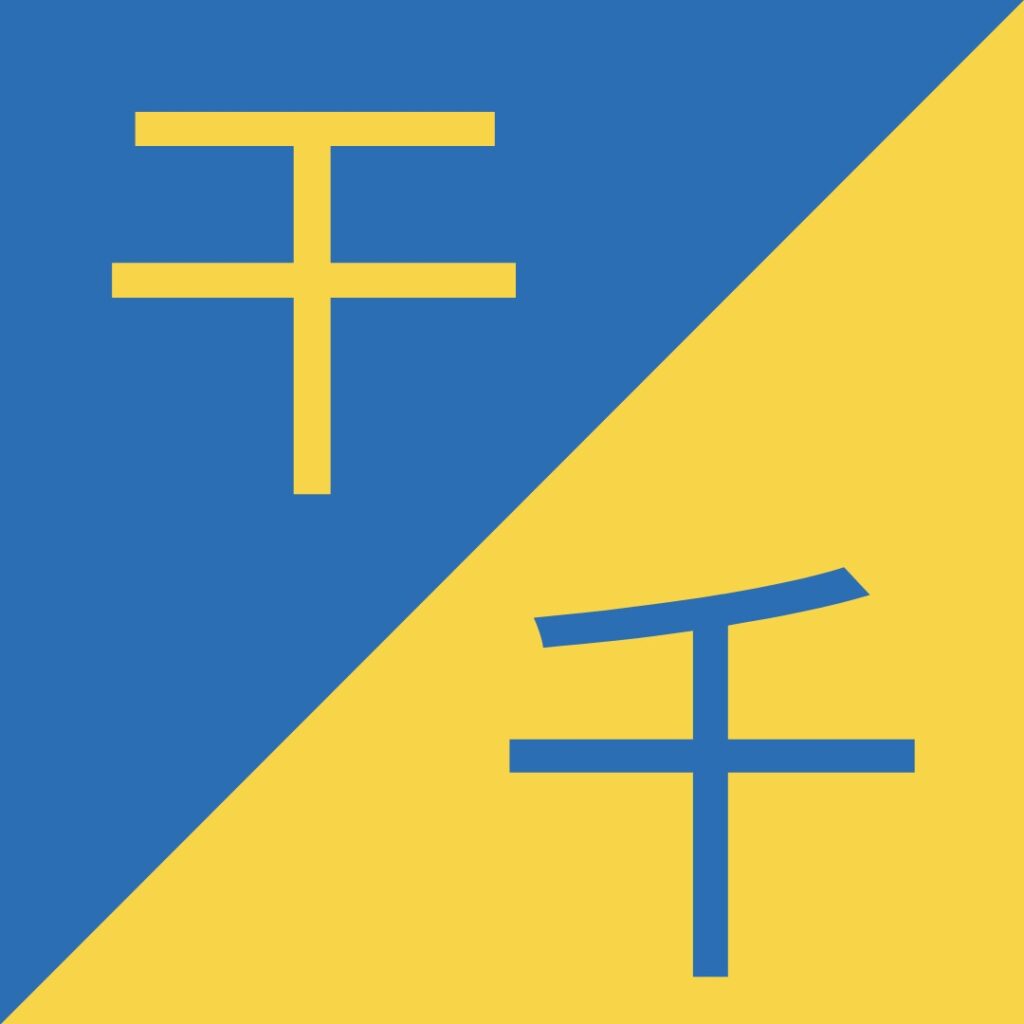
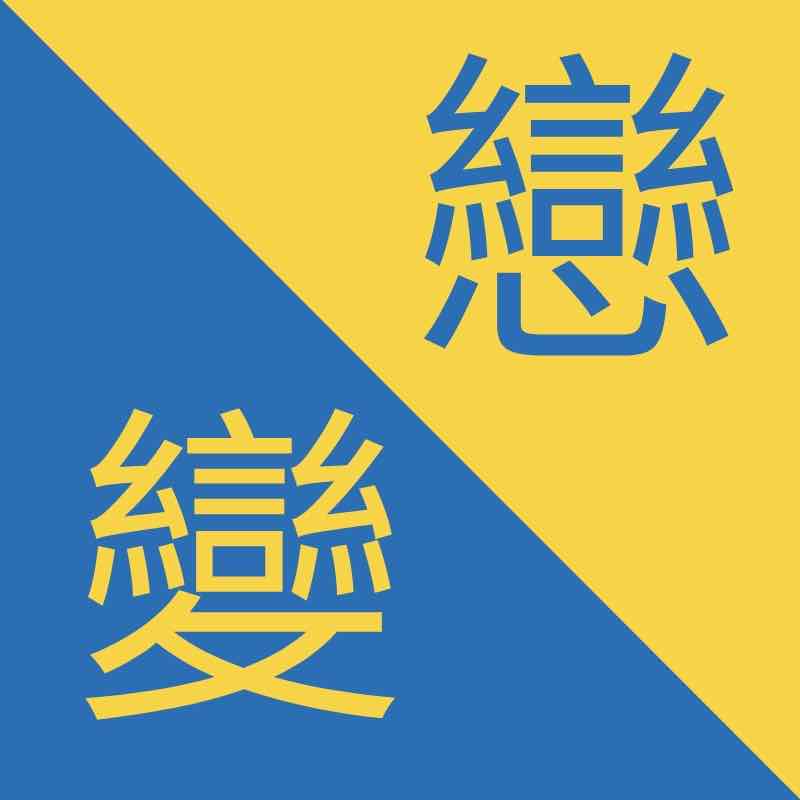
Japanese Language History
The Japanese language is one of the few languages that doesn’t seem to have a concrete origin.
There’s lots of evidence for multiple theories, but nothing concrete. It remains disputed amongst linguists.
You’ll find lots of Sino-Japanese words in Japanese coined by using existing Chinese characters, which first found their way into Japanese around the 6th-9th century A.D.
As well as Chinese words, you’ll also find a lot of English words that started to enter the language mid-18th century.
For example, ‘takushi’ (taxi), and ‘teberu’ (table).
- Table | テーブル
- Taxi | タクシー
In fact one of the 3 Japanese alphabets (Katakana, the script you can see in the above examples) focuses mainly on loanwords which is a great motivator for new students of Japanese. When you can read the Katakana alphabet you’ll discover a tonne of new words almost straight away!
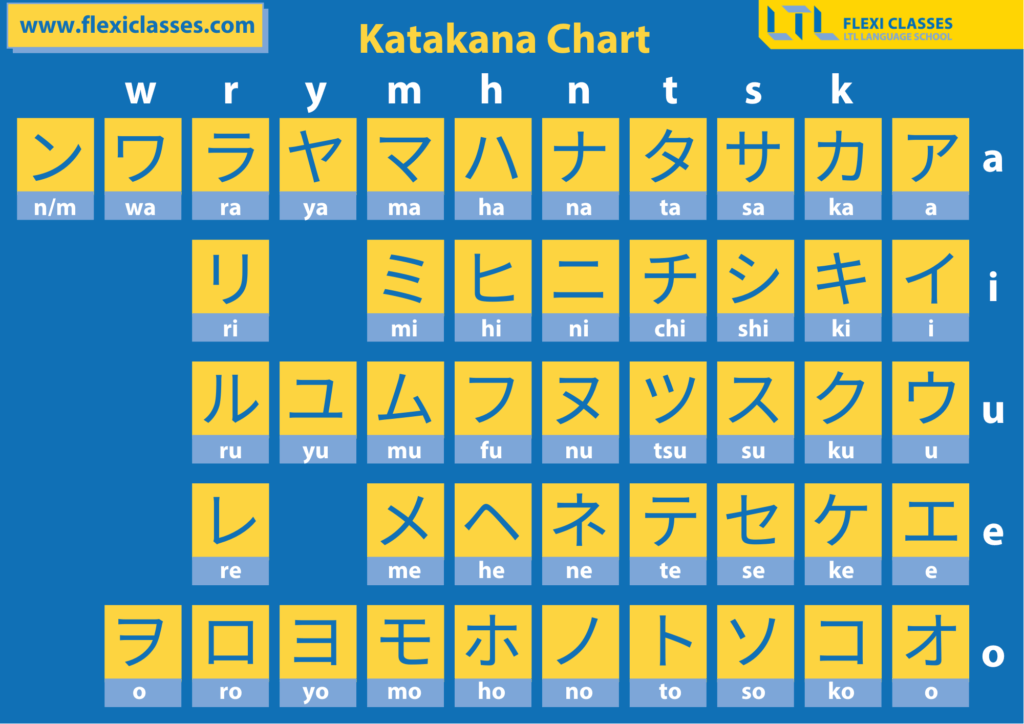
Korean and Japanese are different languages and mutually unintelligible, but they are often compared for their similar features in things such as general structure, vowel harmony, lack of conjunctions, and the frequent and important use of honorific speech (different speech styles depending on who you are speaking with).
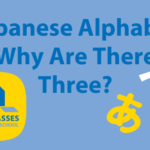
The 3 Japanese Alphabets // Discover Hiragana, Katakana and Kanji
The Japanese Alphabet is not singular. In fact there are 3 alphabets in Japanese! Hiragana, Katakana and Kanji. We teach you why and how to use them.
Korean Language History

Similar to the Japanese language in terms of structure, the Korean language also borrows a lot of words from Chinese, including an entire counting system.
Originally, Korean didn’t use spaces in its sentences, much like Japanese, and Chinese (who still don’t today).
In the late 1800s this stopped, and Korea started to resemble many European languages that use spaces between each word to separate them.
NOTE – It may sound a bit odd that Japanese doesn’t use spaces, but the use of Chinese characters in a sentence helps to break this up!
DID YOU KNOW – About 10% of basic nouns in Korean, such as 산 san ‘mountain’ and 강 kang ‘river’ come from Chinese and remain used in the language frequently today.
Japanese vs Korean vs Chinese // Elements Of The Language
Chinese (Mandarin)

Chinese may look terrifying at first (step up Traditional Chinese)…
It boasts many complicated symbols that seem like pictures more than a language or an “alphabet”.
However, Chinese is actually relatively uncomplicated grammatically.
Chinese characters each represent a word in the vocabulary, and these “words” each carry their own meaning or grammatical function.
Each character has one of 5 tones (4 standard tones and a neutral flat tone).
Whilst the characters may look like a random mess of strokes, they actually are incredibly logical.
So much so that if it’s the first time you see the character, the reader will most likely be able to guess at the meaning or how it is pronounced – or both.
Each character is made up of a collection of radicals, which we can easily understand as morphemes, or in other words, parts of a word.
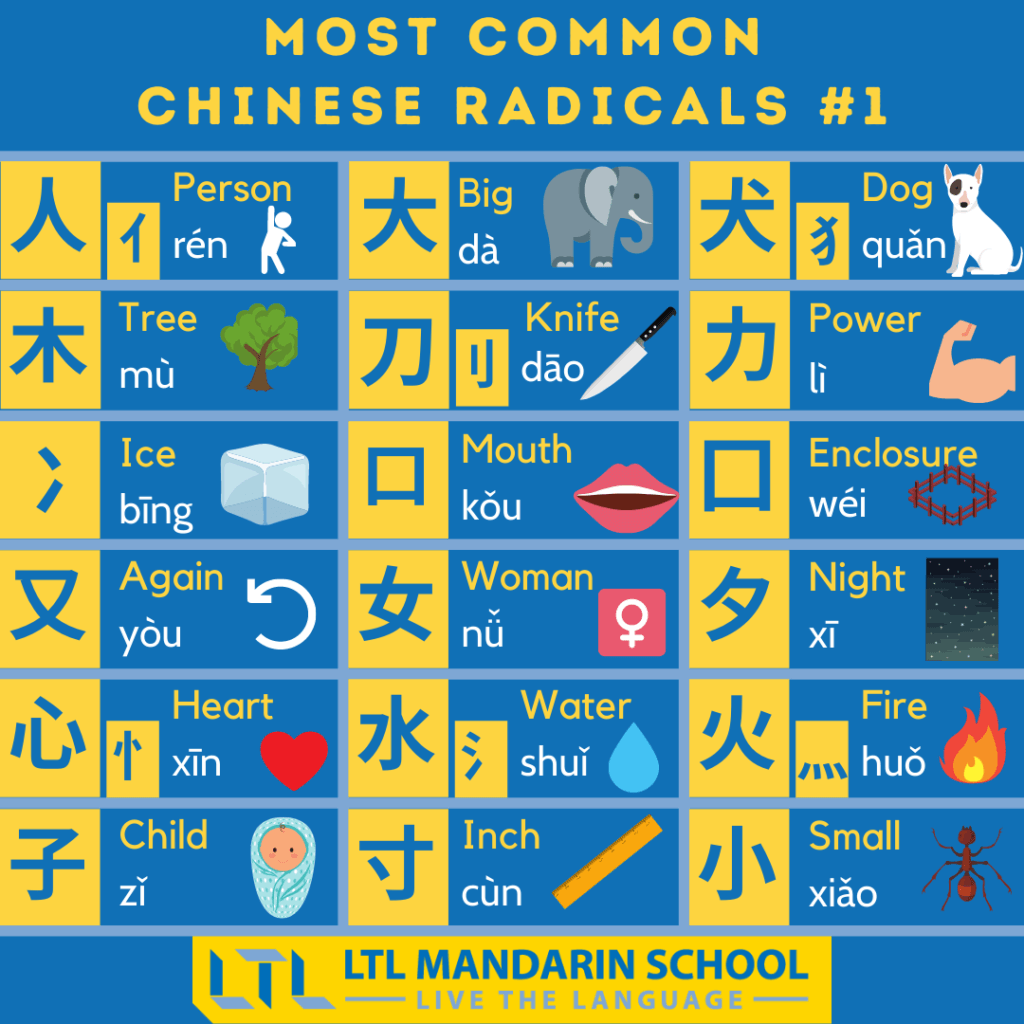
For example, let’s take this (not real) word “defoliaged”
This is a made up word. But you can understand that it might mean “the removal of leaves”.
This is because of the components that make it up;
- “De-” = Take away, remove
- “Foliage” = Leaves, overgrowth
- “-ed” = Past tense or passive marker.
Chinese characters, despite how complicated they look, work in a similar way.
Chinese grammar is also simple in the sense that verbs, nouns, and adjectives don’t have to agree with one another, and there is no such thing as singular or plural in the Chinese language. (e.g. I play, he playS).
There are no verb tenses (e.g. I playED), but instead additional words or phrases are used to indicate time.
Out of the 3, Chinese grammar would rank the easiest to learn.
Japanese
The Japanese language has an SOV (Subject – Object – Verb) grammatical structure. English uses an SVO structure.
With the subject frequently omitted from Japanese structures, it means that Japanese sentence components often appear in the opposite order compared to how an English sentence would.
EXAMPLE
I gave bread to him in Japanese would literally be…
私は彼にパンをあげた (watashiwa kareni pan o ageta)
I – him – to – bread – gave
Another thing notable about the Japanese language is the lack of spacing used in sentences.
Sentences are broken up naturally by using the different alphabets so the meaning is usually clear.
Japanese grammar can be a big obstacle for English native speakers learning the language, since it is so different.
Where English uses words to indicate grammatical meaning, almost in a similar way to Chinese, Japanese uses only grammatical components.
Japanese grammar and Korean grammar are often likened to each other in this way.
In addition to the complicated grammar, Japanese also has one of the most complicated writing systems.
In fact, Japanese has 3 different writing systems – and in one word or sentence all three of these can be used together.

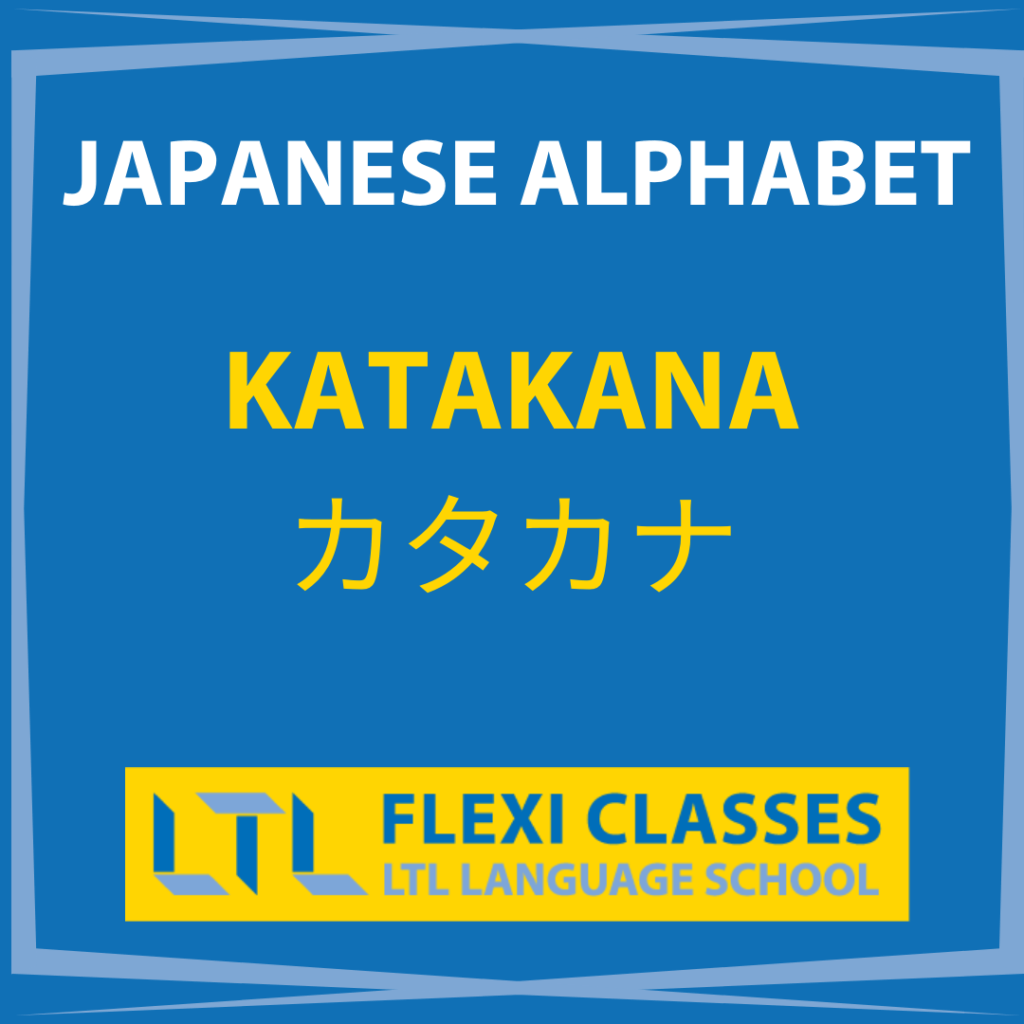
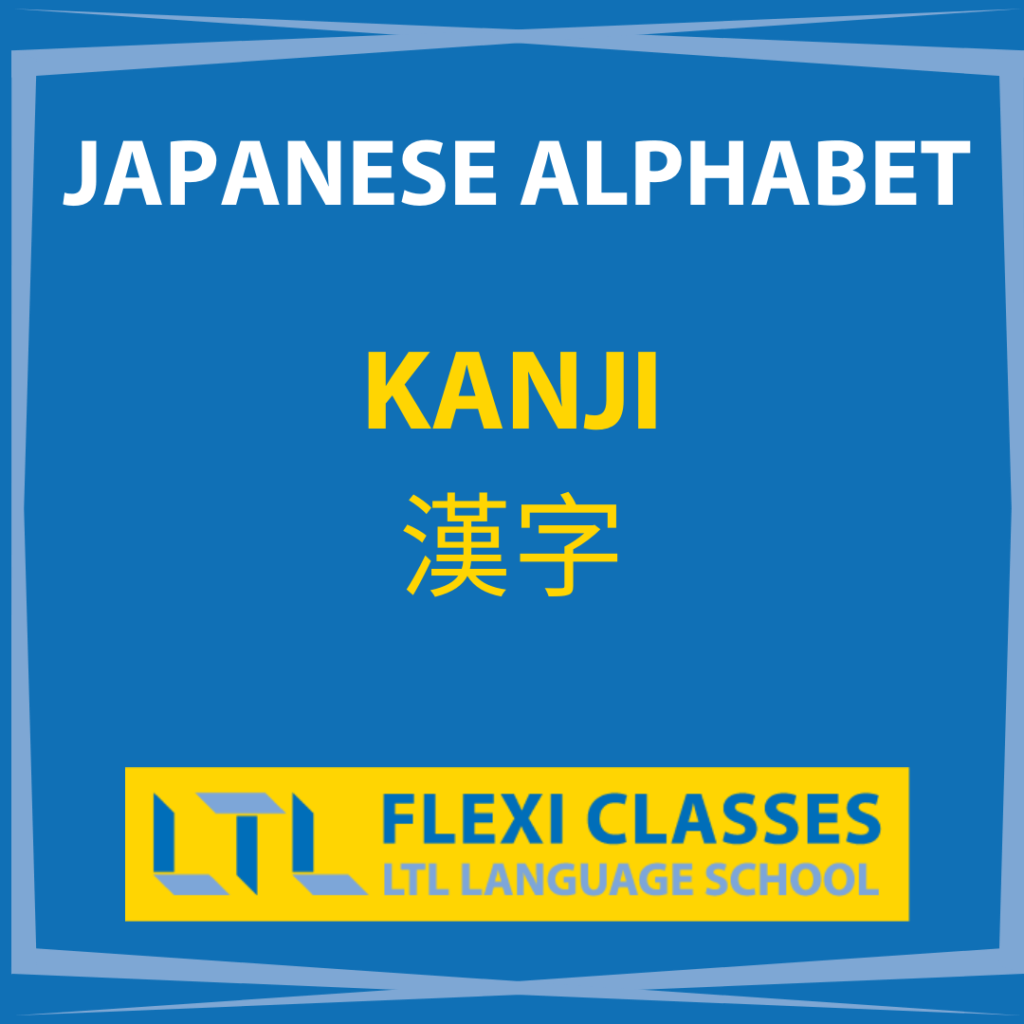
Two of the writing systems which are more like alphabets (with 50 syllables each) are phonetics syllabaries, meaning that each symbol directly translates to the exact sound (unlike English where letters can have different sounds, e.g. the “a” in “laptop” vs. in “cake”.)
These three writing systems are called katakana, hiragana, and kanji. They are all used together and have different purposes in the language.
- Katakana – Foreign origin words
- Hiragana – General writing and grammatical structures
- Kanji – Chinese characters
In addition to this, Japanese also uses traditional Chinese characters.
There are around 2,000 used in daily life in Japan.
DISCOVER OUR TOP TIPS – for learning Hiragana right here!
Korean
As with Japanese, Korean uses the Subject Verb Object word order.
Many people agree that Korean is much easier than Japanese to read and learn, however, since there are no Chinese characters.
Actually, I find that this makes it HARDER since I enjoy learning Chinese characters, and they make sense to me. But I think most people don’t agree! Each to their own!
Korean also only uses one alphabet, which is so much easier than the three alphabets of Japanese or the 10,000+ characters of Mandarin Chinese.

The writing system is one of the easiest alphabets in the world to learn, since each individual symbol is made up of different sounds that form one sound together.
Since it’s entirely phonetic, once you have learned the symbol to match the sound, you can technically read any Korean word.
This writing system dates back to 1443 and is known as Hangul in South Korea, or Chosen Mal in North Korean.
This is much easier than English which differs in sound vs. spelling.
The main differences between Japanese and Korean phonetic alphabets, however, is that Korean can change its sound depending on the phrases or other sounds its matched with, meaning it’s actually not entirely phonetic.
This means that spelling and pronunciation can be more difficult and there is more room for error.
Japanese, on the other hand, is entirely phonetic, and once you have learnt the alphabet it gets pretty difficult to spell or pronounce something incorrectly – even just weeks after starting to learn the language.
FREE DOWNLOAD ALERT – Want to download our Korean Alphabet PDF’s? Click below and enjoy our free download!
Print it, review is, share it, download it – do what you want! We hope it’s useful.
Japanese vs Korean vs Chinese // Key Differences
Here are some key comparison points between Japanese vs Korean vs Chinese
Firstly we summarise the usage of Chinese characters:
| Japanese | Korean | Chinese | |
|---|---|---|---|
| Usage of Chinese Characters? | Traditional Only | None | Simplified (Mainland Chinese) Traditional (Hong Kong, Taiwan) |
Now we look at the writing systems used:
| Japanese | Korean | Chinese | |
|---|---|---|---|
| Writing System | 3 Writing Systems (Hiragana, Katakana, Kanji) | 1 Writing System (Hangul) | 1 Writing System (Hanzi) |
| Phonetic or Tonal? | Phonetic | Largely Phonetic | Tonal |
Finally we give our view on the grammar of each language:
| Japanese | Korean | Chinese | |
|---|---|---|---|
| Grammar Difficulty | Complicated | Complicated | Simple |
When comparing which language to study out of Chinese, Japanese and Korean, it really comes down to what matters to you and what you find easy/difficult.
Personally, I find grammar the hardest and enjoy learning Chinese characters – therefore, Korean is the hardest language for me (difficult grammar and no Chinese characters), and Chinese is the easiest (easy grammar and Chinese characters).
Other people who enjoy grammar and grammar-based languages find Korean the easiest since it doesn’t have the complicated Chinese characters, and some weird geniuses may enjoy Japanese the most as it is the most challenging – difficult grammar AND Chinese characters.
You may also want to take spelling and pronunciation into account. If you have trouble with spelling or pronouncing words, Japanese may be a good choice for you.
If you find you can’t pin-point accents or stress in words so well, learning the Chinese tones may be difficult for you, so Korean or Japanese may be a better choice.
There are many angles to be aware of before making the leap to learn!
Japanese vs Korean vs Chinese // Can I Learn All Three?
Is it possible to learn Chinese, Korean and Japanese? Most people will tell you no.
Don’t be silly. I’m going to tell you YES.
And you can trust me for 2 reasons.
I am Currently Learning ALL Three! 😲
I have passed the second highest exam level in both Chinese and Japanese.
This means I can happily have conversations in both Japanese and Chinese, enjoy dramas and read newspapers.
I’m currently learning Korean, and studying for the highest level in Chinese (HSK 6).
My Korean is still pretty basic, although I work in Korea and never have a problem ordering a coffee anymore!
Some people say “I’m just good at languages”, but that’s a cop out!
I studied languages at university, and was surrounded by those who are “just good at languages”.
Anyone can learn a language, persistence and desire are the key traits you need to hold on to.
I’m British 😂
We are probably (after our American friends, sorry) the worst at learning languages globally.
The ignorant concept of “Everyone speaks English so why should I learn a foreign language” is all too common in the UK.
So, if I, an ignorant Brit, can learn languages, then so can you. No excuses!
Just to prove I am not a rare case here… check out this amazing Youtube and Instagram channel run by Happi, who goes by the name “The Asian Enthusiast“.
She speaks superb Japanese, Korean and Chinese because she makes it her mission to do so!
Japanese vs Korean vs Chinese // Which Order Should I Learn Them?
Good question!
In my opinion, learning Japanese first was the best way, since it threw me in at the deep end. It is the hardest, officially, so it can only get easier!
Japanese has aspects that you can relate to both Korean and Chinese.
It has Chinese characters, similar grammar to Korean, and shares vocabulary with both of the languages.

It will give you a good foundation if you’re planning on taking the challenge of all three!
This being said, you can probably start with any language and give a good reason for it.
Starting with Chinese will give you lots of vocabulary that’s relatable to both Japanese and Korean.
It also allows you to learn lots of characters to begin with.
Plus the grammar is easy!
Starting with Korean will give you an introduction to some pretty obscure and complex grammar structures that prepare you for Japanese and has vocabulary similar to Japanese and Chinese.
Plus there is only one alphabet to tackle here!
Japanese vs Korean vs Chinese // Which Is Really The Hardest?
So, there you have it!
Mandarin Chinese, a language that looks terrifying to most people, may actually be one of the easier languages in Asia to learn
It’s just a case of embracing those characters, getting used to them, and using Chinese characters as a way to help you learn the language – not trying to ignore them!
From easiest to hardest (in my experience so far), I would say:
- Chinese (easiest)
- Japanese
- Korean (hardest)
As stated above, in my opinion Korean was the hardest to learn, but the studies say Japanese.
Conclusion – it absolutely depends on you!
Good luck and above all, enjoy studying these beautiful languages.
Japanese vs Korean vs Chinese // FAQ’s
Which is harder – Japanese vs Korean vs Chinese?
According to studies, Japanese is reportedly the most difficult language for native English speakers to learn.
Korean and Japanese are at the top of the “most difficult” level – with Japanese having just a small edge on Korean for it’s use of 2 alphabetic structures and use of kanji – Chinese characters (in total 3 alphabets essentially) instead of just one alphabet like in Korean.
How many alphabets does Japanese have?
Japanese actually has 3 alphabets!
Hiragana
Katakana
Kanji
You can discover what they are and why in our post about the 3 Japanese Alphabets!
Does Chinese have an alphabet?
Oddly enough Chinese does not have an alphabet, but is a series of thousands of characters!
This makes is different from Korean and Japanese which have their own alphabets.
You can discover more about the Chinese “Alphabet” here.
What is the Korean Alphabet called?
The Korean Alphabet is called Hangul and consists of 24 letters.
14 consonant letters and 10 vowels.
How can the Korean and Japanese alphabets differ?
Korean can change its sound depending on the phrases or other sounds its matched with, meaning it’s actually not entirely phonetic.
In Japanese this is not the case.
It is entirely phonetic, and once you have learnt the alphabet it gets pretty difficult to spell or pronounce something incorrectly – even just weeks after starting to learn the language.
Which language has the easiest grammar out of Japanese vs Korean vs Chinese?
The grammar of Chinese is certainly much easier than it’s Korean and Japanese counterparts!
Chinese grammar is also simple in that verbs, nouns, and adjectives don’t have to agree with one another, and there is no such thing as singular or plural in the Chinese language. (e.g. I play, he playS).
Want More From LTL?
WANT TO LEARN JAPANESE? Check out our online Japanese courses here.
We offer a 7-day free trial to all new students where you can study 24/7.
What about studying Japanese in Japan instead? We’ve got your back. Our Japanese courses in Tokyo can either be taken in small groups of no more than 5 students or individually for a more tailored experience.
We even offer incredible homestay experiences in Tokyo as well.
Come and be a part of this amazing community.










22 comments
Korean way harder, no question in my eyes!
Not easy, no doubt about that!
As a Newbie, I can safely say Korean is the hardest out of the 3 I've found so far anyway
Thanks Haz! Keep battling on
Fascinating to see how they can be similar but also differ. Would love to speak them all one day
3 beautiful languages Christine. If you ever want to kickstart your journey, you know who to call!
[…] From easiest to hardest (in my experience so far), I would say: Chinese (easiest) Japanese. Korean (hardest) via […]
[…] Korean and Japanese are at the top of the “most difficult” level – with Japanese having just a small edge on Korean for it's use of 2 alphabetic structures PLUS the use of Kanji – Chinese characters (in total 3 alphabets essentially) instead of just one alphabet like in Korean. via […]
[…] From easiest to hardest (in my experience so far), I would say: Chinese (easiest) Japanese. Korean (hardest) via […]
你好!因为你在文中Mention过学过中文,所以我就直接用中文评论啦~
一下要纠个错:日语中使用漢字的并不全是 Traditional Chinese, 它和 Simplified Chinese 一样,曾经简化过漢字。例如: 單(Chinese Traditional), 单(Chinese Simplified), 単( Japanese Simplified).
齊(CT), 齐(CS), 斉(JS), and so on.
当年中文在中国大陆的简化过程中是以“最终丢弃漢字,使用拉丁文”为目标简化的。简体字在当时只是从繁体字 --> 拉丁文的过渡。所以在很多情况下,简体中文有着一些并不合理的符号化,例如 “汉,难,欢”中的 偏旁“又”,(对应繁体字为“漢,難,歡”) ,日語(“漢、難、歓”)日语简化漢字的主要目的还是为了方便书写,所以没有中国大陆的简化力度大,看起來像沒有簡化過,其实和Traditional Chinese的区别还是蛮大的。
[…] Korean and Japanese are at the top of the “most difficult” level – with Japanese having just a small edge on Korean for it's use of 2 alphabetic structures PLUS the use of Kanji – Chinese characters (in total 3 alphabets essentially) instead of just one alphabet like in Korean. via […]
All rock solid 😂
We respectfully disagree 😅
I love and wish I could speak all 3!
You're on the right website Chris. flexiclasses.com can boost your knowledge in all three!
Yea I did thanks, I started the free trial. Enjoying it so far, great teachers
Love to hear it!
[…] Click to see full answer […]
[…] + 여기서 자세히 보기 […]
[…] Japanese vs Korean vs Chinese | Which Is Really The … […]
[…] + View More Here […]
[…] + View Here […]